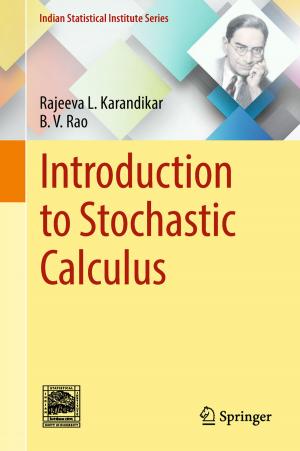Elements of Hilbert Spaces and Operator Theory
Nonfiction, Science & Nature, Mathematics, Functional Analysis, Mathematical Analysis| Author: | Harkrishan Lal Vasudeva | ISBN: | 9789811030208 |
| Publisher: | Springer Singapore | Publication: | March 27, 2017 |
| Imprint: | Springer | Language: | English |
| Author: | Harkrishan Lal Vasudeva |
| ISBN: | 9789811030208 |
| Publisher: | Springer Singapore |
| Publication: | March 27, 2017 |
| Imprint: | Springer |
| Language: | English |
The book presents an introduction to the geometry of Hilbert spaces and operator theory, targeting graduate and senior undergraduate students of mathematics. Major topics discussed in the book are inner product spaces, linear operators, spectral theory and special classes of operators, and Banach spaces. On vector spaces, the structure of inner product is imposed. After discussing geometry of Hilbert spaces, its applications to diverse branches of mathematics have been studied. Along the way are introduced orthogonal polynomials and their use in Fourier series and approximations. Spectrum of an operator is the key to the understanding of the operator. Properties of the spectrum of different classes of operators, such as normal operators, self-adjoint operators, unitaries, isometries and compact operators have been discussed. A large number of examples of operators, along with their spectrum and its splitting into point spectrum, continuous spectrum, residual spectrum, approximate point spectrum and compression spectrum, have been worked out. Spectral theorems for self-adjoint operators, and normal operators, follow the spectral theorem for compact normal operators. The book also discusses invariant subspaces with special attention to the Volterra operator and unbounded operators.
In order to make the text as accessible as possible, motivation for the topics is introduced and a greater amount of explanation than is usually found in standard texts on the subject is provided. The abstract theory in the book is supplemented with concrete examples. It is expected that these features will help the reader get a good grasp of the topics discussed. Hints and solutions to all the problems are collected at the end of the book. Additional features are introduced in the book when it becomes imperative. This spirit is kept alive throughout the book.
The book presents an introduction to the geometry of Hilbert spaces and operator theory, targeting graduate and senior undergraduate students of mathematics. Major topics discussed in the book are inner product spaces, linear operators, spectral theory and special classes of operators, and Banach spaces. On vector spaces, the structure of inner product is imposed. After discussing geometry of Hilbert spaces, its applications to diverse branches of mathematics have been studied. Along the way are introduced orthogonal polynomials and their use in Fourier series and approximations. Spectrum of an operator is the key to the understanding of the operator. Properties of the spectrum of different classes of operators, such as normal operators, self-adjoint operators, unitaries, isometries and compact operators have been discussed. A large number of examples of operators, along with their spectrum and its splitting into point spectrum, continuous spectrum, residual spectrum, approximate point spectrum and compression spectrum, have been worked out. Spectral theorems for self-adjoint operators, and normal operators, follow the spectral theorem for compact normal operators. The book also discusses invariant subspaces with special attention to the Volterra operator and unbounded operators.
In order to make the text as accessible as possible, motivation for the topics is introduced and a greater amount of explanation than is usually found in standard texts on the subject is provided. The abstract theory in the book is supplemented with concrete examples. It is expected that these features will help the reader get a good grasp of the topics discussed. Hints and solutions to all the problems are collected at the end of the book. Additional features are introduced in the book when it becomes imperative. This spirit is kept alive throughout the book.















